Warehouse Success: Speed Up, Spend Less

When managing today’s warehouses, velocity and value are non-negotiable. From predictive AI to flexible robotics, warehouses are cutting costs and accelerating fulfillment without breaking the bank—or the back. Here’s how smart strategies and lean tech help companies gain ground by moving faster and spending smarter.
While reining in costs and accelerating warehouse operations are worthy goals at any time, their importance is increasing, driven by an uncertain economy, volatile geopolitical environment, expensive real estate, and a challenging labor market.
“It’s all about cost and speed right now,” says Ashley Hetrick, principal and sourcing and supply chain segment leader with BDO.
The two goals often support each other. Moving goods in and out of a facility more quickly generally lets a company operate with fewer employees and in a smaller space, cutting both labor and real estate costs.
Many warehouse operators are foregoing capital-intensive solutions for those that incorporate relatively cost-effective tools, such as data analytics and artificial intelligence (AI). These can help companies quickly identify opportunities for improvement, for example by highlighting picking operations that take longer than average, and showing how a different layout could accelerate them.
Artificial intelligence that drives predictive analytics is also moving into the cold storage space, says Brad Hulbert, director with Grant Thornton’s business consulting group, specializing in supply chain. It can aid in forecasting demand, which is critical with many of these products, given their limited shelf life.
Also in demand are predictive models that can help in analyzing rapidly changing markets, says Nick Stuart, retail and restaurant consulting leader with RSM US. For instance, wary of ongoing supply chain disruptions, some companies are pulling inventory orders forward. This reduces the risk of stockouts, but also makes inventory volumes more volatile and planning more difficult. Predictive models can help address these challenges.
Robotic automation can offset both labor shortages and higher wages. And as their costs drop, robots are becoming more accessible to middle market companies, Stuart says.
It’s also possible to implement robotics in stages. This helps companies space out their investments, and prove the use case before making a huge commitment.
Some warehouses with slightly higher budgets are looking to access even more data and insight with smart sensors, such as RFID tags, Hetrick says. When attached at the point of manufacturing, RFID tags let a warehouse account for products as received once they cross the facility’s sensor threshold, streamlining the goods receipt operation. The tags also reduce the risk of miscounting or incorrectly scanning goods, so companies can move inventory more quickly and with a higher degree of accuracy.
Similarly, placing inspection services on site within a food or cold storage facility at a port of entry enables products that require inspection to more quickly enter the U.S. domestic market. And by evaluating their warehouse and distribution networks, companies can identify the locations that balance efficiency with customer service.
The companies highlighted here are leveraging technology and revamping processes to address the challenges their warehouses face. As they do, they’re cutting expenses and improving operations, while boosting customer service and labor efficiencies.
Signal Boost: U.S. Cellular Dials Back Costs
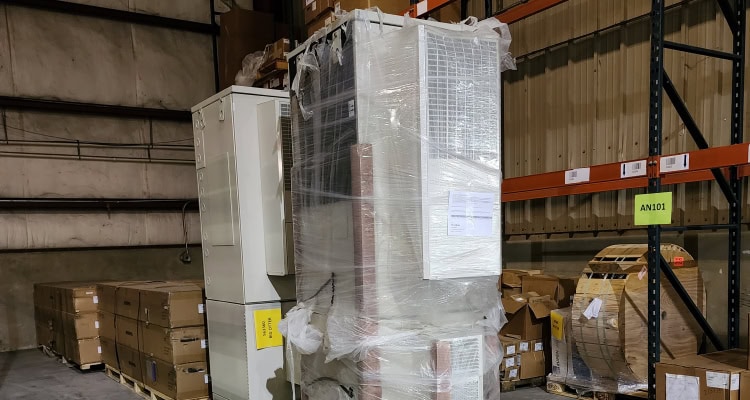
To address high inventory costs for its large, bulky products, U.S. Cellular consolidated from 12 to six warehouses, and boosted forecasting.
Several years ago, U.S. Cellular’s network supply chain group was managing one dozen warehouses across the country. Among other responsibilities, this group supports the building and maintenance of the company’s wireless network; handles strategic sourcing for building towers, fiber, and general contractors; and oversees the warehouses.
Too often, the group’s inventory wasn’t located where it was needed most. “We spent a ton of money transferring inventory between warehouses,” says Amy Augustine, senior director, network supply chain. Given the size of many of these products, the costs could quickly add up.
U.S. Cellular conducted a network distribution study, which revealed that six warehouses was “the sweet spot‚” that could support the wireless network on a timely basis, while keeping costs in check, Augustine says.
The team culled and consolidated inventory within the remaining warehouses, recycling older cabling, radios and other products. A new planning and forecasting team leveraged data from the company’s ERP system and mapping tools to assess where it made sense to stock various inventory items.
Another step was to shift from bulk ordering equipment. While this allowed for volume discounts and reduced the risk of stockouts, it often meant that equipment had to be moved from one warehouse to another.
U.S. Cellular worked with its 3PL partner to standardize processes across the warehouses. For example, instead of randomly loading equipment on a pallet, the team “Ikea-ized” it, Augustine says. Parts that will be used quickly go near the top and parts that are needed last, on the bottom. This makes it easier for the general contractors to build the site.
Among other benefits, Augustine and her team chopped about $1 million in warehouse fees within nine months. And in the first year, they also cut about $500,000 from the cost of transferring equipment from one warehouse to another.
The consumer side of U.S. Cellular, which handles mobile phones, tablets, and the like, has also been working to improve warehouse operations. Historically, the company’s devices and accessories came through a single fulfillment center. This worked well from a resource and cost effectiveness perspective, and it simplified some planning processes.
The downside was business continuity. When the pandemic hit in 2020, it became clear that an extended shutdown of the lone DC would cause trouble. “We did not have a good plan B,” says Robin Sowell, senior manager, logistics operations. In early 2022, the company opened a second facility.
The work wasn’t over, however. Initially, orders were assigned to one of the warehouses based on where the products were headed. Often, both DCs had to meet minimum order quantities when purchasing from suppliers, driving up inventory levels. Because neither DC had all the products a store might order, stores would often receive orders from both DCs. This was cumbersome for all involved.
Sowell brought together stakeholders from logistics, planning, and procurement—along with the company’s logistics and transportation partners—to brainstorm ideas. Among other conclusions, they found that trying to handle supply and demand for all channels out of both distribution centers complicated the planning process.
The team shifted to planning and fulfilling by sales channel. Bigger orders for the company’s stores are handled through the primary DC, while direct-to-consumer orders are handled from the other.
This shift allowed Sowell to move the bulk of inventory to the primary distribution center. Now, instead of six orders per day, stores receive fewer than two, on average.
The change also reduced inventory levels, cut transportation spending by 10%, and slashed carton quantity by between 35 and 50%, even as unit volume remained relatively flat or slightly down. Overall space utilized dropped by about 40%.
From a business continuity perspective, U.S. Cellular can utilize the secondary DC to fill corporate-owned stores, if necessary, Sowell adds.
Kenco’s Slotting Solution Cracks the Code
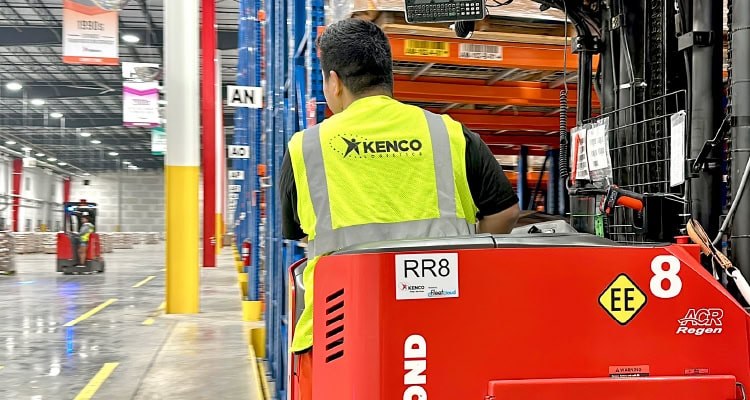
Kenco’s Slot DC is an AI-powered warehouse optimization tool that automates slotting and zoning by analyzing SKU velocity, seasonality, and operational patterns to enhance picking efficiency and reduce labor costs.
Kenco, a third-party logistics provider, manages more than 100 distribution centers across North America. Over the past several years, as the volume of data collected from business intelligence tools grew, Kenco created a data warehouse to ensure a solid layer of data would fuel future innovations, says Satish Vadlamani, director of data science and business intelligence.
The Slot DC solution Kenco developed leverages deep learning to create heat maps that show picking trends, put-away compliance, and zone recommendations for reserve and forward pick areas. It also monitors the movement of stock-keeping units (SKUs) between non-optimal and optimal zones and analyzes how relocating a product to a more optimal position can impact the bottom line.
As Slot DC conducts its analysis, it considers sales data, as well as attributes such as product size and any hazmat restrictions. If a popular product is required to comply with hazmat restrictions, the solution searches for the optimal location within hazmat-approved areas. Slot DC is automated and doesn’t require a heavy investment in new equipment, Vadlamani says.
Kenco deployed Slot DC with a puzzle company that lacked both a consistent forward picking area and a consistent method for identifying which SKUs to assign to forward picking. Slot DC identified the changes needed and saved the company nearly $300,000 annually by optimizing its forward picking areas, Vadlamani says.
Port NOLA: Fast Freeze, Fresh Gains
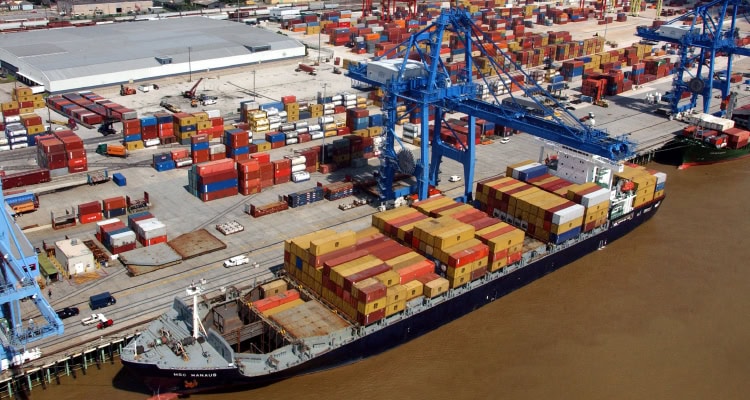
Port NOLA partnered with Lineage for on-site inspection capabilities for imported food products at its temperature-controlled facility.
Cold storage has long played an important role in warehousing operations at the Port of New Orleans, says Janine Moreau Mansour, director of trade development. It’s critical to the frozen poultry export market, which is the port’s second-largest containerized export.
In contrast to many U.S. ports that are working to grow their volume of exports, Port NOLA has targeted maintaining its current export business, while growing its fresh and frozen imports, Moreau Mansour says. The current 90/10 ratio of exports to imports can create equipment challenges for exporters, as they struggle to find empty refrigerated equipment containers.
One step toward this goal is the Port’s partnership with Lineage, a temperature-controlled warehousing and integrated transportation solutions provider. Lineage offers its iHouse—or within the warehouse—inspection capabilities for imported goods at one of its Port NOLA facilities. Food products that require inspection before entering the U.S. market won’t have to be transported to another site for inspection and certification.
“Onsite inspection services help get these products to market quickly and efficiently while meeting all regulatory requirements,” notes Christopher Britton, vice president, regional sales, with Lineage.
Lineage also offers blast-freezing capabilities, so shippers don’t need to invest in their own blast-freezing operation. Having this capability within a warehouse also speeds time to market.
Groceries on the Fly: Cutting Wait Times in Half
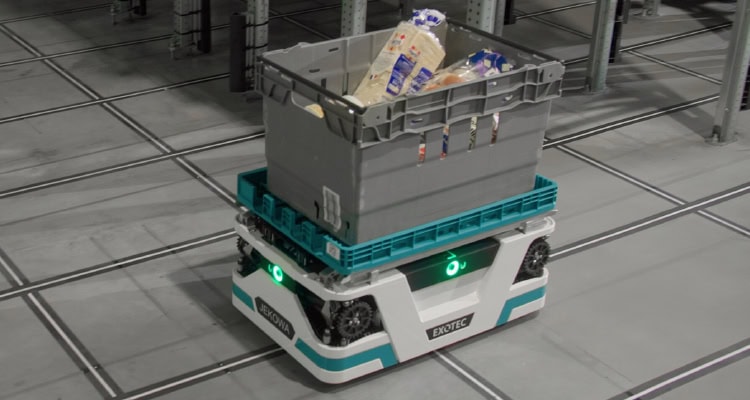
Exotec’s Skypod solution supports both each and case picking while integrating multiple value-added functions.
The drive-through pick-up option offered E. Leclerc Seclin, a supermarket in France, has grown in popularity, says Maxence Maurice, the company’s CEO. Customers place their orders online and pick them up a few hours later.
As more customers used the service, wait times grew, Maurice says. Because the company lacked the capacity to handle the growing number of orders, management had to place a daily limit on them. In addition, employees traveled long distances to collect and deliver orders, which impacted their productivity and well-being.
“We needed a logistics solution that could handle and alleviate these various challenges,” Maurice says. The solution? The Next Generation Skypod robots from Exotec, a provider of warehouse robotics.
Skypods can handle up to 66 pounds within one tote, says Exotec spokesperson Anna Von Schmeling. The totes can transport nearly any type of container between racks and workstations, helping to improve workflows and efficiency.
At E. Leclerc Seclin, the Skypods transport bins filled with items ordered by customers to sorting tables; the items are then moved to bins that correspond to each customer order. Next, these bins are directed to one of three integrated Exotec buffer systems depending on the order’s temperature requirements: ambient, fresh, or frozen.
When customers arrive at the drive-through pick-up, they sign in via an external terminal, which triggers the extraction of bins from the storage areas, Maurice says. As customers pull up to a station, the bins are automatically lowered in a continuous flow, ready to be stowed directly in the boot.
With the Skypods, E. Leclerc Seclin can handle up to 1,200 orders daily, a 50% jump from the previous average. Customer wait times have dropped to about five minutes. “With the shorter wait times and greater system reliability, we’ve seen increased customer loyalty,” Maurice notes.
Flex, Fuel, Fulfill: Powering a Healthy Supply Chain
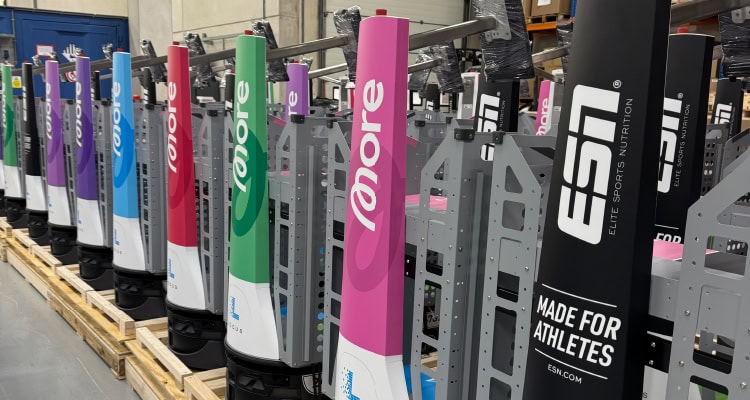
Robots from Locus Robotics support TQG’s picking, sorting, and internal transport processes.
The Quality Group (TQG), which offers protein powders and bars and other nutrition products, handles up to 12 inbound trucks per day at its warehouses. Each year, the warehouses manage fulfillment for more than six million boxes, says Selim Tansug, COO with the Hamburg, Germany-based company.
As order volumes surged, TQG needed to scale operations efficiently while maintaining speed and accuracy. “Robotics became a natural solution to meet these growing demands,” Tansug says.
Robots from Locus Robotics currently support TQG’s picking, sorting, and internal transport processes. “They help optimize repetitive tasks, reduce physical strain on staff, and ensure a more streamlined material flow throughout the warehouse,” Tansug says. The robots helped TQG accelerate picking speed by 25%, improve order accuracy, and reduce labor costs per unit shipped.
Starting with 40 robots that operated within a specific warehouse zone and handled a select number of SKUs, TQG has since ramped up to 125 robots, says Denis Niezgoda, chief commercial officer, international, with Locus Robotics. These are on track to fulfill thousands of orders per day.
“For us, robotics aren’t just about automation—they’re about enabling agility,” Tansug says. “They’ve been instrumental in enhancing our performance during peak seasons and are a critical part of future-proofing our operations.”
Warehouse Wake-Up Call: Automate or Fall Behind
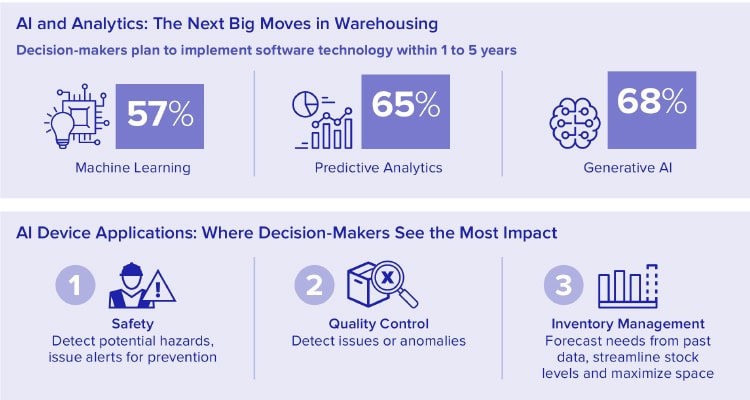
Frontline warehouse workers report rising concerns with injuries on the warehouse floor, and stress about meeting business goals if warehouse leaders don’t embrace intelligent automation.
Those are among the findings of Zebra Technologies Corporation’s latest warehousing vision study, Elevating Every Move: The Formula for High-Performance Warehousing.
According to the study, 63% of warehouse leaders plan to implement artificial intelligence (AI) software and augmented reality (AR) within five years. In addition, 64% plan to increase spending on warehouse modernization in the next five years, and 63% have already accelerated their modernization timelines or plan to do so by 2029.
As global warehouse expansion continues and daily order volumes increase, frontline workers share feedback suggesting that warehouse leaders need to move faster to expand workforce capacity:
- 85% of associates say, “if my employer does not invest in technology to improve warehouse operations, we will not meet business objectives.”
- 74% of associates are concerned they spend too much time on tasks that could be automated.
- 72% of associates are concerned about safety on the (increasingly busy) warehouse floor, with 70% specifically worried about injuries.
- 69% of associates report a lack of qualified staff on the warehouse floor and express concerns about fatigue and physical exhaustion.
Even warehouse leaders admit they find it challenging to maintain the fill rates (51%) and prepare orders (47%) outlined in their service level agreements, with order accuracy and outbound processes cited as the top two operational challenges in the Zebra study. Increased ecommerce activity also makes “faster delivery to the end-customer” a top challenge for warehouse teams, even as technology use is on the rise.
Given the disparity between customers’ growing expectations and warehouse operators’ limited hiring capacity, warehouse associates say it’s important that warehouses use collaborative robots, ergonomic mobile devices, communications applications, and task management tools to help solve workplace issues.
The increased availability of automation and mobile technologies would help attract and retain more warehouse associates, agree 93% of associates, while 89% say they feel more valued by their employers when provided with technology tools and automation designed to help them.
